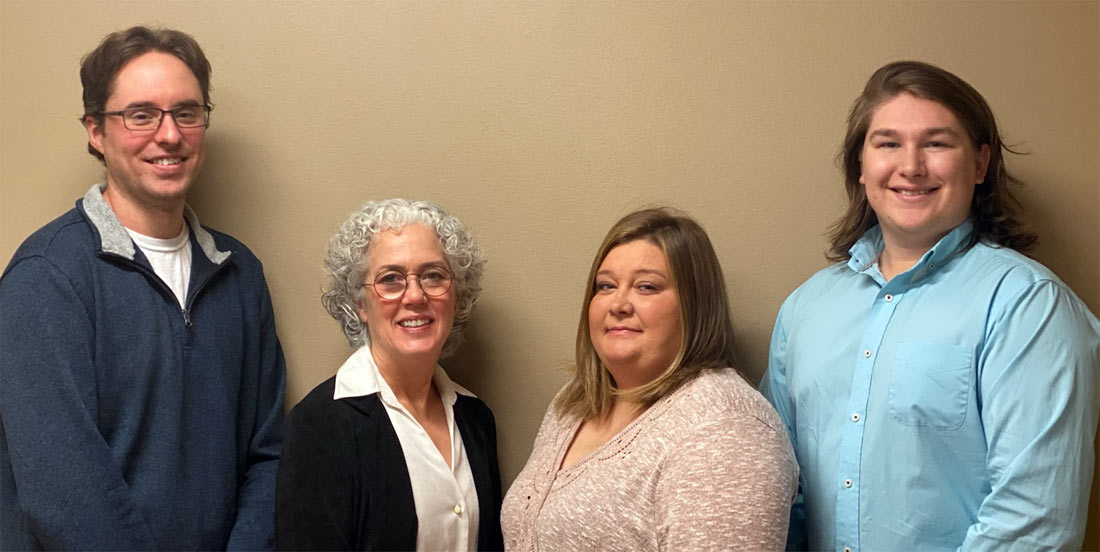
Allan, Janet, Gina, and Jay
Septic Consulting and Certification
Necessary, Inc. offers careful, thoughtful, and responsible inspection and consulting services for on-site sewage facilities (OSSF) in Austin and Central Texas. We perform mortgage resale inspections which is also referred to as certification. Necessary is more than qualified to provide new facility design for your next project. Additionally, Necessary can also help you with complete consulting or troubleshooting.
Janet Dunkelberg, R.S. has more than 38 years experience and is the principal of Necessary, Inc. She has done extensive inspecting, evaluating, and designing of on-site sewage facilities. She has performed hundreds of resale reinspections of on-site sewage facilities, she has also been training our new team diligently in order to have all your questions and/or concerns answered as efficiently and accurately as possible. Janet combines a native Austinite's knowledge of the varying geophysical conditions found in Central Texas, a degree in biology, and extensive experience with the rules and regulatory processes of each jurisdiction in the region. She is a Site Evaluator licensed by TCEQ and a Registered Sanitarian.
Necessary, Inc. hopes that this site will be helpful to anyone needing information about on-site sewage facilities. We have compiled a list of links that provide access to most if not all of the web sites of the agencies involved with the operation and regulation of these facilities. We also try to provide the answers to the most common questions people have when having to deal with them. Please feel free to contact us if you need help with your system or future septic system needs.
Frequently Asked Questions
Necessary, inc. has tried to list commonly asked questions you might have about OSSF. New questions and answers are added to this list periodically.
What does an "on-site inspection" include?
- Inspect the interior of tank (tank must be pumped out during the inspection).
- Activate the pump and high water alarm.
- Pump to all disposal fields.
- Walk over the disposal fields.
- Check inspection ports in the disposal fields.
- Inspect site hole dug in the disposal field (required for older disposal fields).
- Inspect for greywater discharge and evidence of lateral migration of effluent from the facility.
What do I have to do to prepare for the inspection?
The septic tanks should be located, and the access ports for each tank, or each compartment of each tank, should be uncovered. The access ports are small lids, usually 12 to 18 inches across, in the larger lid. They are designed to permit cleaning of the tank. Unless the tanks have been uncovered within the last three years, this should be accomplished the day before the inspection. Since the tank(s) are to be pumped during the inspection, most people let the septic pump service uncover the tanks for them. For older OSSF, it may be necessary to locate the disposal field.
Who has records of my on-site sewage facility?
The location of your property determines which agency has jurisdiction for on-site sewage facilities, and should have records for your OSSF. Very old OSSF may not have records.
Does the County (or City) require that a septic tank system be inspected when the house is sold?
Currently, the only OSSF licensing agency in Central Texas that requires re-inspection at resale is the Lower Colorado River Authority. If the house is in L.C.R.A.'s jurisdiction, an application for re-licensing must be submitted to L.C.R.A. and their inspector will perform an inspection. Some of the other agencies (for example, Hays County and Williamson County) provide resale re-inspections as a service, but do not require them.
My high-water alarm is on. What do I do?
The high-water alarm activates if the effluent level in the pump tank rises too high, either because the pump has failed to come on, or because it is on, but is not successfully pumping the effluent out to the disposal field. Try these steps:
- Make sure the pump is plugged in.
- Make sure the breaker is on.
- Plug the the pump directly in. Usually, the pump plugs into the float switch, which plugs into the electric outlet. If the alarm goes off, then the problem is with the float switch. DO NOT leave the pump plugged directly in! It will burn up! Call me for recommendations for a contractor to make repairs.
- Alternate the disposal field.
- If none of these work, call me for recommendations for a contractor to make repairs.
DO NOT allow a contractor to replace the pump without investigating why the pump failed!